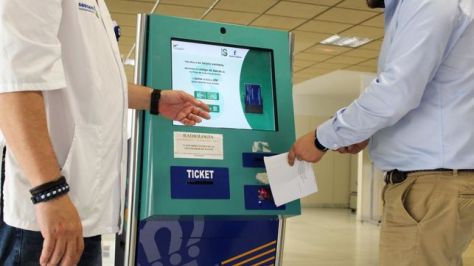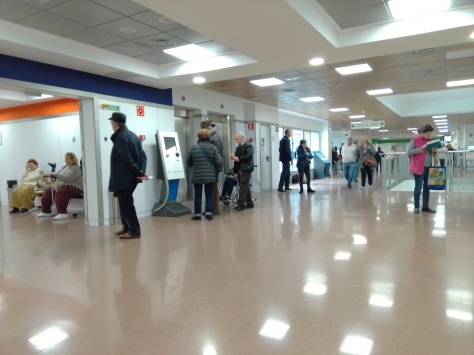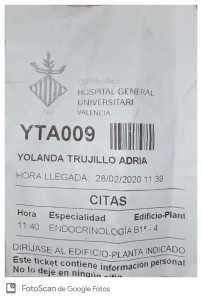Taking the floor from the Chloe’s article about the online appointment for going to the doctor, I would like to explain you the Valencian region Health system and how queuing here has been (a bit) better in the last years.
It is true that in Spain we have a Public Health System that is a global one over the territory and has been considered as one of the best systems in the world. Not only because is public and free for everybody, but for the highest quality doctors in areas as important as cancer or organ transplantation. But one main issue in our( more than good) public health system is that the health competence of the government is delegated to the regional government, so there are some differences not in the medical part but in the management part of the hospitals and ambulatories. That creates a difference not in the quality of the service itself, at all doctors will take care in the same conditions, but on the waiting time for the patients. There are, then, several regions that are implementing the ticket system as in the Valencian region, that will be explained in this article.
The system for a general appointment with the doctor works as follows:
1st – You ask for an appointment in one of the following ways:
a) In person at the reception desk of the hospital or ambulatory
b)By telephone calling your hospital or ambulatory call center.
c) By internet at the official public health system website of the valencian region. You can choose between the App or the website and nowadays is the most common way to ask for an appointment.
2nd – You go to the doctor the day fixed. Then you arrive to the bulding and insert your card in a machine like this one:


Then, when you insert your health card and or pass the barcode and if you have an appointment correctly registered in the system, the machine print a ticket like this:

Here you can see a real ticket where first you have a code, that is the code that activates the system, so the doctor knows that you are waiting and this is the code that the system will say in the speakers and publish in a screen, in my case YTA009. This code will be the same for all your visits, so nobody knows who is first( as the professor explained during the queuing class) and at the same time nobody knows your data, or where are you going. Once the screen and the speakers say your code, you need to go to the room they tell you to see your doctor.
You have also available in the ticket your full name, time of arrival, time scheduled and the waiting room where you need to go, specify by building, section and floor in the case of a hospital or a huge ambulatory where sometimes is difficult to find your place. The best thing about it is that you can use any machine and then you have the information about how to arrive in the waiting room easily.
This system is not perfect and there are several things that could be changed as the paper print or the time between patients that still is not enough for some consults, but nevertheless this is mainly the result:

As you can see there are even some available seats what can demonstrate that the system works, not perfect, but works better than all the other systems, and the fact that a lot of regions in Spain are implementing this system is a good sign that with some investment the queuing problem we had several years ago( with more than two or three hours waiting to see the doctor) is solved.
If you want to know how this queuing system is affected by urgencies, or you have any other question after this article, please, leave some comments and I will be glad to answer and to know the systems you have in your countries.